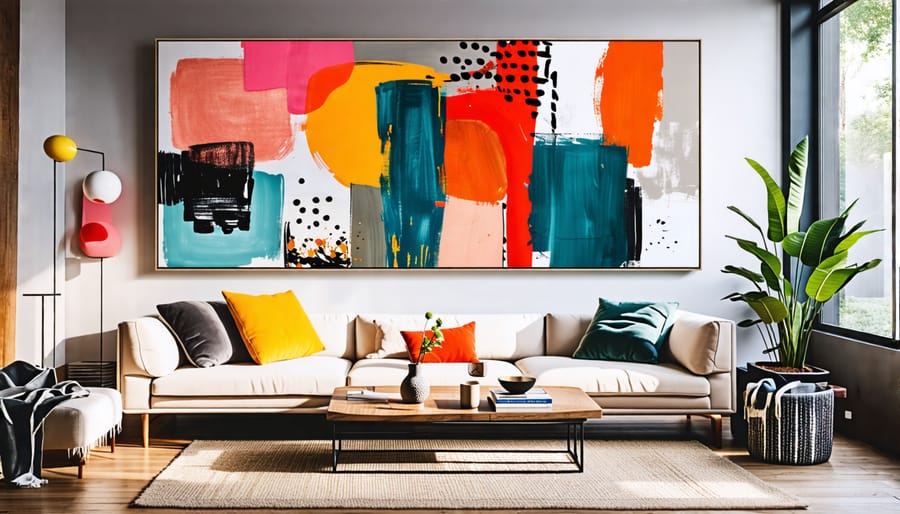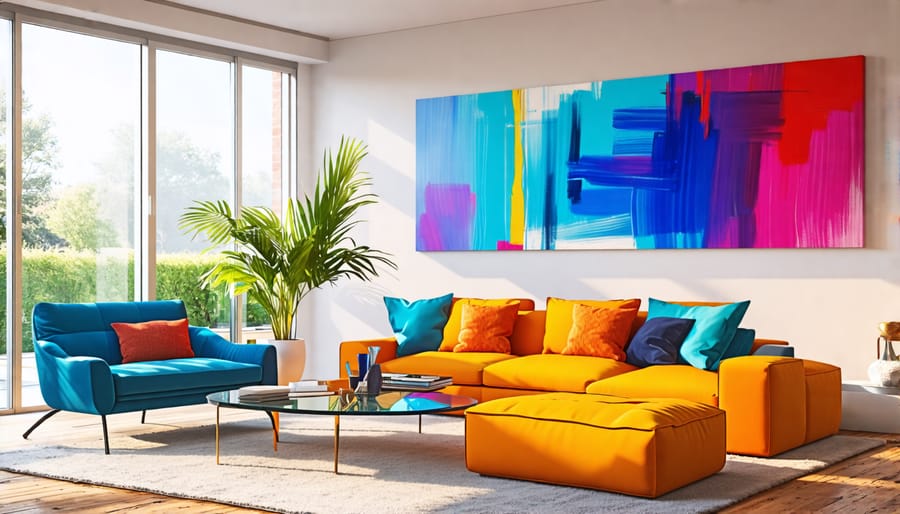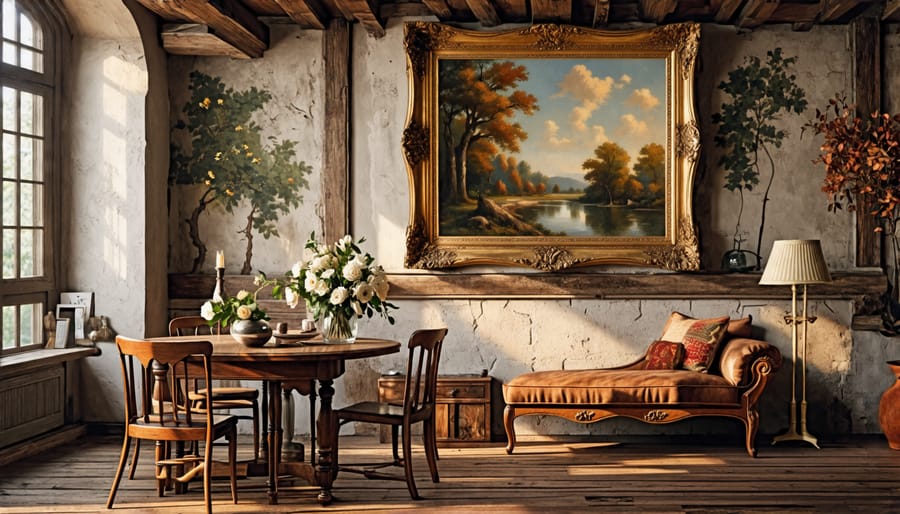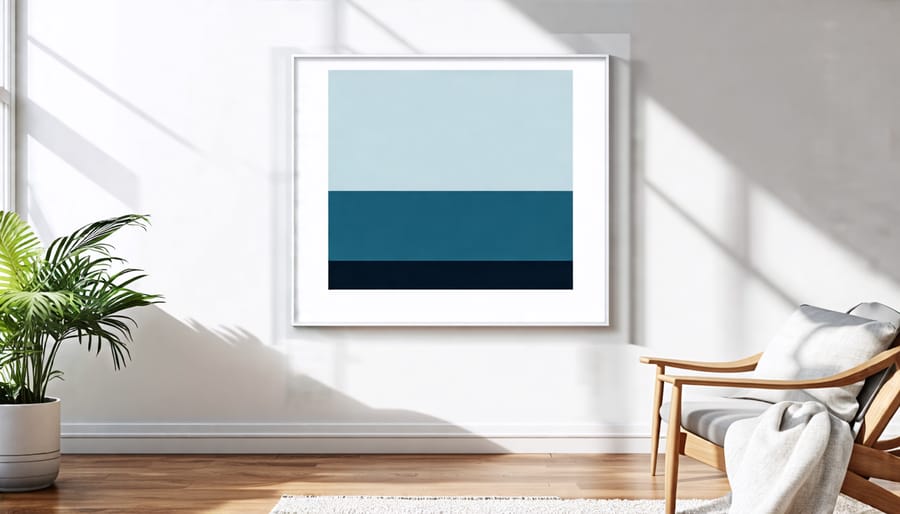
How Art Transforms Interior Spaces: Creative Design Tips for Stunning Results
Incorporate bold colors and textures to immediately invigorate a room and express personal style. Select artwork that complements or creates contrast with existing furniture, ensuring harmonious integration. Opt for large statement pieces or create gallery walls to add depth and focus, transforming bland spaces into dynamic ones. Use art strategically as a conversation starter by featuring unique or locally-sourced pieces that carry personal or cultural significance. Integrate technology by using smart frames for rotating digital art displays, enhancing versatility and interaction. For more tips to elevate your space, explore diverse design elements.
The Power of Art: Beyond Aesthetics
The Psychological Impact of Art
Art has a profound psychological impact, shaping the mood and energy of any space it inhabits. Different artworks can evoke a range of emotions, from calm and tranquility to excitement and inspiration. For instance, landscapes with lush greenery often bring a sense of peace and relaxation, making them ideal for bedrooms or meditation spaces. In contrast, vibrant abstract pieces might ignite creativity and conversation, perfect for living rooms or creative work areas. The use of color in art heavily influences the atmosphere; warm tones can create a cozy, welcoming environment, while cool hues might be more soothing and serene. Moreover, the choice of medium—whether it’s a bold oil painting or a delicate watercolor—adds another layer of texture and depth. Selecting art that resonates personally can also offer a sense of identity and comfort, transforming a house into a true home. By considering these psychological cues, you can thoughtfully integrate art into your interior design to enhance both aesthetic appeal and emotional wellbeing.
Art and Spatial Dynamics
Art is a powerful tool for transforming interior spaces, capable of altering perceptions of both space and light. By strategically placing artwork, you can make a small room feel larger or turn a dim corner into a bright focal point. Large-scale pieces can create the illusion of expanded space, drawing the eye across the room and encouraging a sense of openness. In contrast, a well-chosen, smaller piece can add intimacy to a vast environment, making it feel more cozy and inviting. Art can also play a pivotal role in manipulating light. Reflective pieces, like those with metallic finishes or glossy coatings, can enhance natural light, brightening up darker areas without additional artificial lighting. Additionally, the color palette within a piece can influence mood and perception. Cool tones can make a space feel airy and expansive, while warm tones can add comfort and warmth. Whether you’re a homeowner looking to refresh your living area or an interior designer seeking to redefine a space’s ambiance, art offers creative avenues to explore.
Integrating Art into Different Interior Styles

Art in Modern and Minimalist Spaces
Integrating art into modern and minimalist spaces can create a stunning visual impact while enhancing the overall atmosphere. In these sleek environments, simplicity and functionality reign, making art selection critical to maintaining balance without overwhelming the space. Consider choosing artwork that mirrors the clean lines and neutral palettes typical of minimalist design, or go bold with a pop of color to energize the room. Art pieces with geometric shapes or abstract motifs often resonate well in modern settings.
Placement is key; select focal points where the art can stand out, such as above a sofa or along a hallway. Mixing different scales and textures can also add depth and interest. For a DIY approach, consider rotating art pieces periodically to keep the space fresh and dynamic. Additionally, incorporating technology such as digital frames allows easy updates to showcase diverse art styles. Uncover more innovative ideas in our list of interior design secrets. By thoughtfully curating art in modern spaces, you not only enhance aesthetics but also create a personalized sanctuary that reflects your style.
Art in Rustic and Vintage Interiors
Integrating art into rustic and vintage interiors can breathe new life into these traditional spaces while maintaining their unique charm. Whether you’re a homeowner looking to refresh your decor or an interior designer working on a client project, the right artwork can add personality and depth. Think of warm, earthy tones and textured pieces that resonate with the natural elements typical of rustic settings. Vintage spaces often come with their character, making it essential to select art that complements existing features like exposed beams or aged furniture.
Consider hanging a series of botanical prints to echo the organic feel, or opt for abstract paintings with muted palettes that harmonize with the room. Mixing styles strategically, such as pairing a contemporary sculpture with vintage decor, can create a dynamic, eclectic vibe. For DIY enthusiasts, creating gallery walls with thrifted frames and artwork can offer a personalized touch. Remember, art should tell a story and reflect the essence of the space it inhabits, making each corner of your home feel curated and thoughtful.

Practical Tips for Choosing and Displaying Art
Choosing Art for Your Space
Selecting art for your space is an exciting journey that allows you to infuse your personality and taste into your environment. Start by considering the mood you wish to create. Are you looking for a serene vibe with calming prints, or a bold statement with vibrant abstracts? Understanding your style preferences is key to finding pieces that resonate with you. Next, evaluate your space requirements; measure wall dimensions to ensure the artwork fits harmoniously without overwhelming the room.
Think about the color palette of your interiors. Choose art that complements or contrasts your existing decor for visual interest. Mixing different art styles—such as combining contemporary prints with classic oil paintings—can add depth and texture. If you enjoy hands-on projects, consider creating a DIY piece; it’s a wonderful way to personalize your decor. Remember, the most impactful art is not just seen, but also felt, transforming your space into a true reflection of you.
DIY: Creative Ways to Display Art
Transforming your living space with art can be both thrilling and rewarding. Begin with a gallery wall—a classic yet endlessly versatile display that can suit any room. Mix and match frames and art styles for an eclectic look, or stick to a monochrome palette for a sleek, modern feel. To make the project easier, lay out your design on the floor before committing to wall placement. Use removable adhesive strips for a damage-free setup.
For a kitchen or dining room, consider rotating art displays based on seasons or themes. Use clipboards or hanging wire grids to make swapping pieces a breeze. This dynamic method not only adds freshness to your space but also invites seasonal inspiration into your decor.
For those tech-savvy enthusiasts, digital art frames offer a futuristic twist, effortlessly switching between artworks to keep your environment ever-changing. Apps and smart home systems can further integrate these displays into your decor plan, enhancing convenience and engagement.
Finally, utilize shelving to combine art with personal treasures. Arrange small framed pieces alongside plants, books, and collectibles. This layered approach is perfect for creating a cozy, personalized atmosphere in a bedroom or home office.
Whether you’re showcasing a cherished collection or a single standout piece, these DIY ideas inspire creativity and offer countless ways to enhance your home with art.
Technological Integration in Art Display
Smart Art Frames and Digital Displays
Smart art frames and digital displays are revolutionizing how art is showcased in interior spaces. These innovative tools allow homeowners to display a library of art pieces at the click of a button, offering endless possibilities for customization and style change without the fuss of traditional prints. Ideal for those who love versatility, smart frames can match the mood, season, or occasion with ease. Moreover, they enable DIY enthusiasts to personalize their displays, combining technology and creativity effortlessly. These displays are not only practical but also add a modern touch, enhancing any space with a sleek, dynamic flair that appeals to tech-savvy individuals.

Lighting Techniques for Art Enhancement
Smart lighting can transform art pieces into striking focal points, enhancing their visual appeal while safeguarding delicate materials. By using adjustable spotlights or LED strips, you can control the intensity and direction of light, ensuring each artwork is presented in the best possible way. Layered lighting techniques are especially useful, allowing for the combination of ambient and accent lights to create depth and highlight textures. To further refine your space, explore lighting tricks that brighten even the dimmest rooms. This thoughtful approach not only elevates the art but also adds sophistication to any interior space.
Conclusion
Embracing art in our living and working spaces is more than just a visual enhancement—it’s a transformative experience that breathes life and personality into any environment. Throughout this exploration, we’ve unearthed how art impacts our mood and well-being, providing both aesthetic satisfaction and emotional resonance. By blending art into various design styles, whether through statement pieces or cohesive gallery walls, we can strikingly redefine a room’s ambiance. For those eager to personalize their spaces, DIY projects offer a fantastic opportunity to infuse creativity and individuality, making every brushstroke or photograph choice uniquely yours. Additionally, leveraging technology to display art offers dynamic and flexible options that cater to evolving tastes. Remember, art doesn’t require a grand investment—it’s about what speaks to you and complements your lifestyle. As you embark on your artistic journey, consider exploring local artists, mixing styles, or even rotating pieces seasonally to keep your space fresh and engaging. Let the art you choose tell your story, reflecting the nuances of your personality and aspirations. Ultimately, by seamlessly integrating art into your space, you create an environment that inspires, calms, or stimulates, making a well-rounded life both beautiful and meaningful.
